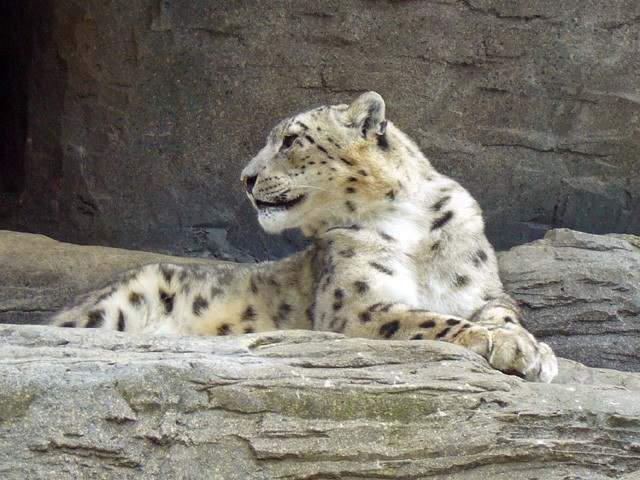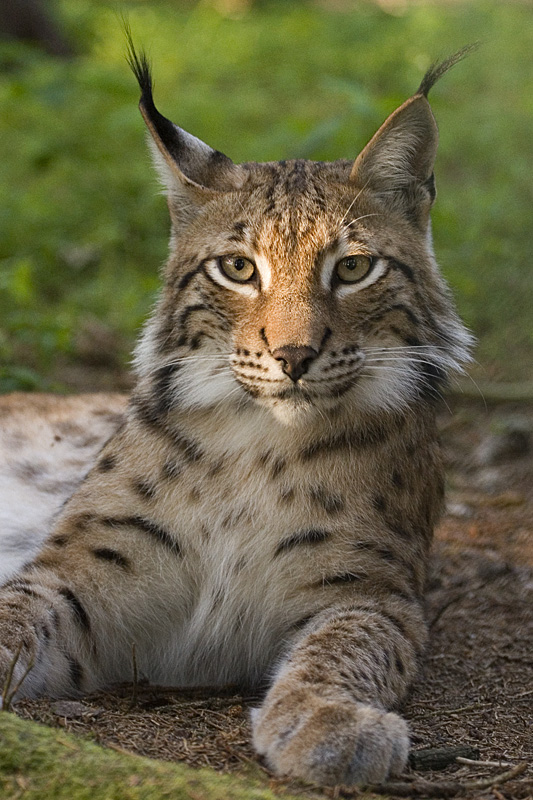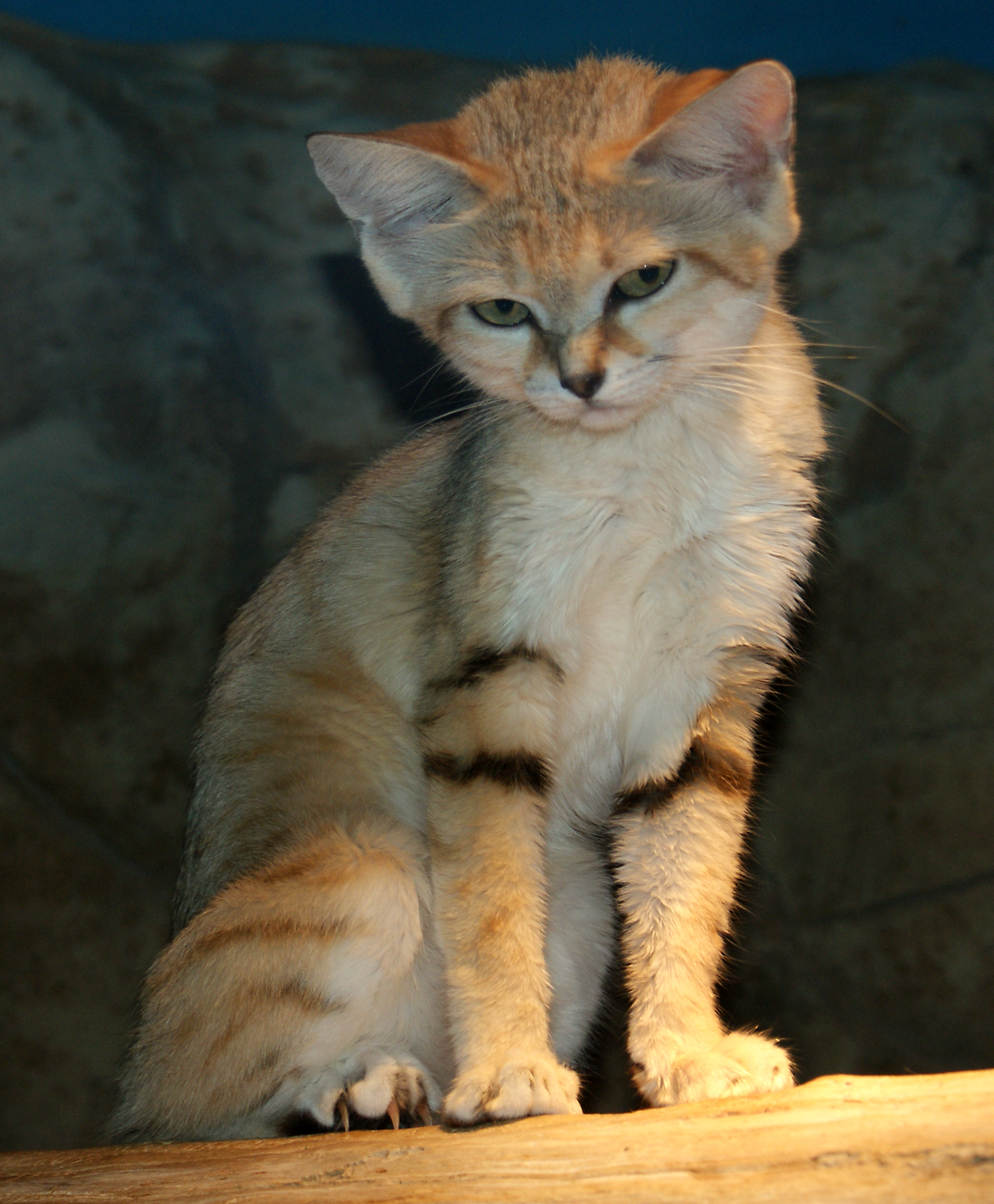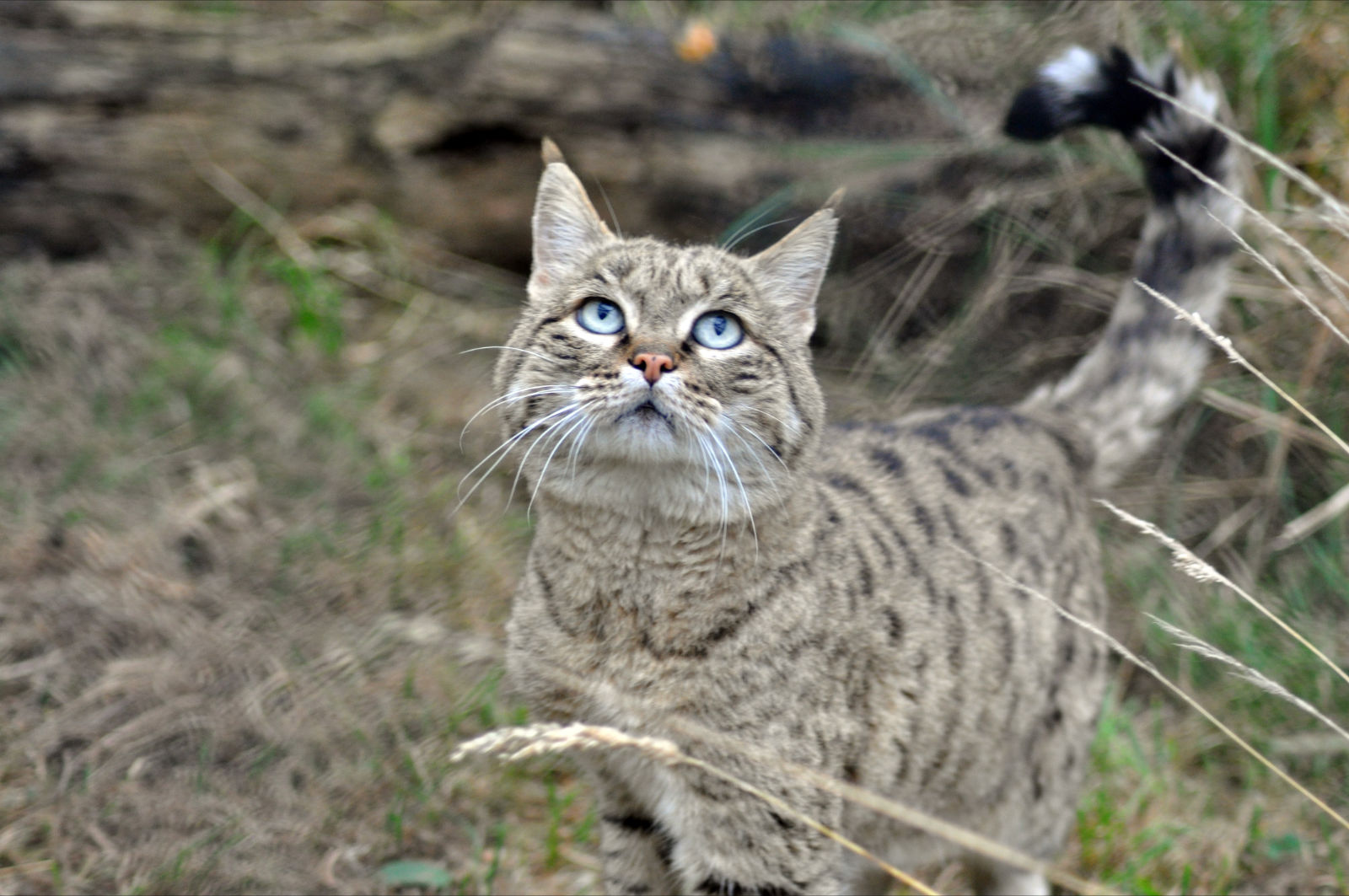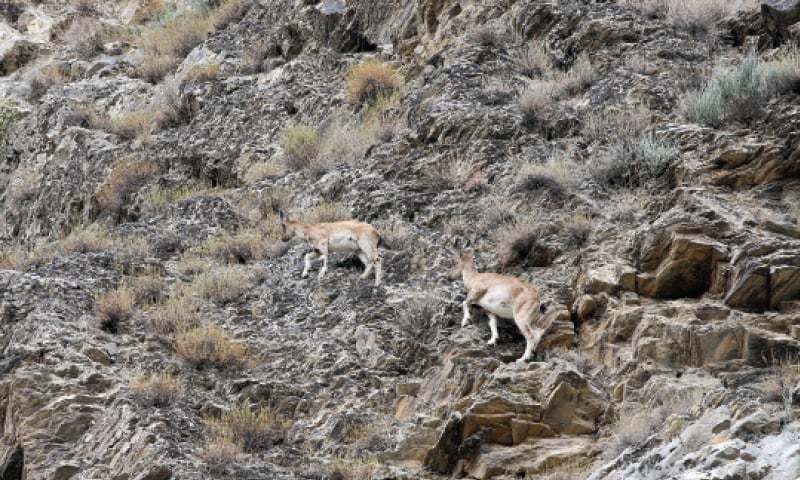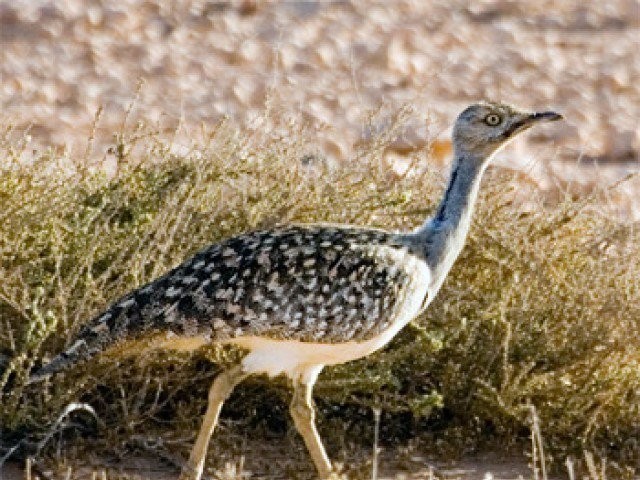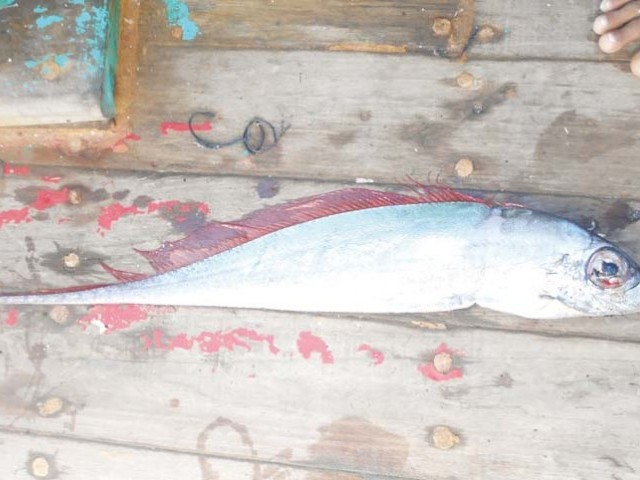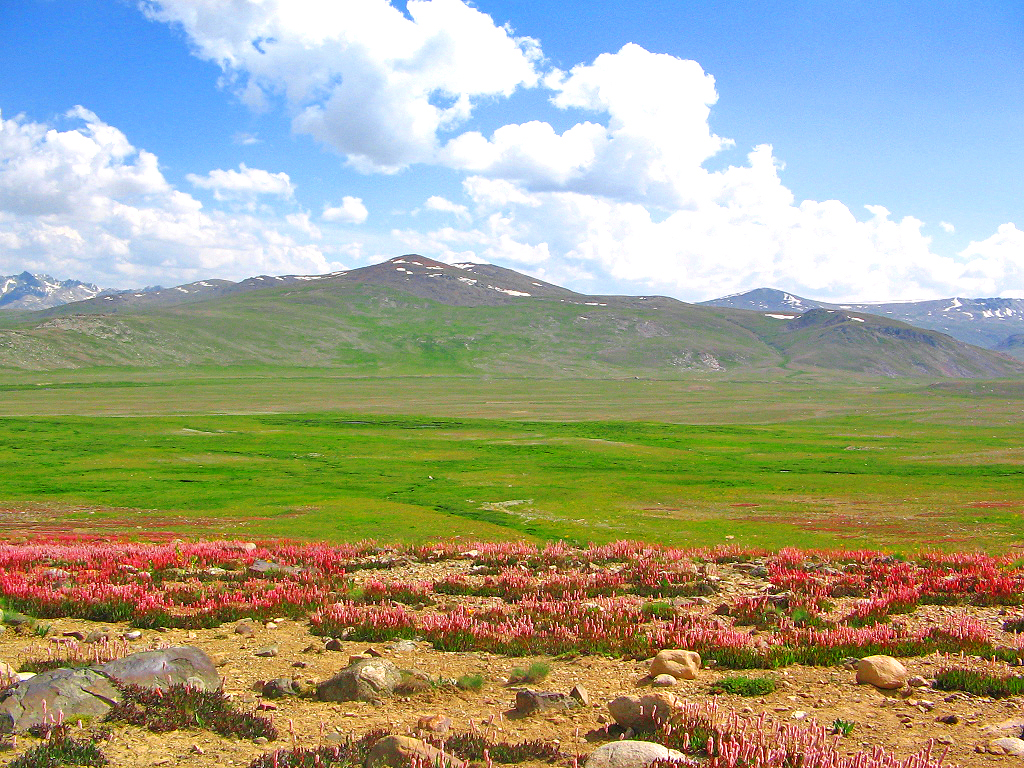Chitral’s markhor population now out of danger
“The untimely death of the four-year-old markhor is not less than a shock for us and we do mourn this as it means a loss of Rs10 million for the local community who devotedly strive for its conservation,” said Fazlur Rahman, the president of a conservancy, in Chitral.
Tears were visible in his eyes due to grief as the markhor had died of an ailment after they rescued it from an inaccessible cliff in the local pasture and took it to the veterinary hospital. It all happened about a month ago and around a 100 community workers had also reached the hospital to get firsthand knowledge about treatment and convalescing of the markhor.
All this activism of the villagers to save the wild goat was due to the fact that they owned it and this sense of ownership had been inculcated in them by the wildlife department by giving them 80 per cent of the income obtained from the trophy hunting.
It is due to the strong bonds of community-based conservation that the impressive animal with iconic corkscrew horns known as Kashmir markhor is no more an endangered species in Chitral. The phenomenal population growth of markhor, the national animal of Pakistan, can be attributed to the community-based conservation strategy which has proved fruitful in the upkeep of other endangered and rare wildlife species.
The population of markhor had dropped to less than a hundred in Chitral in 1980s and it faced annihilation due to the unchecked poaching despite the presence of a full-fledged department for its preservation. Divisional forest officer of wildlife, Chitral, Imtiaz Hussain recalls that in Chitral the number of markhor did not cross the figure of 100 during 80s when he carried out the survey of the animal and it had filled the conservationists with the apprehension of its extinction.
No effort proved productive to check poaching of markhor which had started in 1970s with the introduction of automatic rifles in large number as the purchasing power of the people of Chitral had greatly enhanced after it was merged with the country as its district. Before that it was a princely state and the area was hit by poverty due to the limited sources of earning. Today, the area embracing the southern part of Chitral – from Arandu to Shoghore along Lot Koh river and up to Koghuzi along the Mastuj river – is teeming with 3,400 heads of Kashmir markhor. Mr Hussain says that it is no more an endangered species in the context of Chitral though it had been declared so by the International Union for Conservation of Nature (IUCN) in 1975. Associated with the department of wildlife for the last four decades in the district, Mr Hussain says that the changed stratagem for conservation of markhor worked well in early 1990s due to which the hunters became the guards and this was the crux of conservation policy.
As per community-based conservation programme put in place by the department of wildlife, the villages supporting the population of markhor were organised into village conservation committees (VCCs). Each VCC was a statutory body which was incorporated in the Wildlife Act whose office-bearers were chosen by the villagers themselves and they had a defined role in the conservation process with financial powers vested in them. The diversion of 80 per cent permit fee of trophy hunting of markhor to the VCCs acted as catalyst which they utilised for their collective development on their own free will.
Regarding the conservation programme, Mr Hussain said that the markhor supporting area was divided into two conservancies named as Gahirait-Golen Conservancy (9,500 hactares) and Toshi-Shasha Conservancy (20,000 hactares) apart from Chitral Gol National Park(CGNP – 77.5 square km). Each of the two conservancies has 12 VCCs whose activists act as arteries in the conservation of markhor and other wildlife species. He put the collective savings of the two conservancies to date at Rs85 million which were utilised through their elected bodies.
Giving breakup of the markhor population in the conservancies, he said that according to latest counting survey it was 1,349 markhors in Toshi-Shasha and 434 in Gahirait-Golen conservancy. The number of markhors in areas other than the two conservancies was 27 in Arsoon, 28 in Sheshi Koh valley and six in Drosh Gol bringing the total to 1,844 while CGNP supported a population of 1,556 and thus raising the total of markhor population to 3,400 in the district.
Every year three markhors of the age beyond eight years are put on auction for trophy hunting in the two conservancies of which two are carried out in Toshi-Shasha due to its large population and one in Gahirait-Golen, Mr Hussain said. “It is heartening to observe that the population of markhor in the conservancies is on steep rise and it will have pleasant effect on carnivores as well which depends on it,” he said.
The DFO of CGNP, Mohammad Buzurg, said that the park was established in 1983 and it was given the status of wildlife division in 2010 while community’s support is being enlisted by 13 VCCs. Though no trophy hunting is carried out in the national park, the VCCs are strengthened financially through national park project funds granted by the World Bank previously. They enjoyed the same economic attractions as that of the VCCs managed by the wildlife department, Mr. Buzurg said, adding that the peculiarity of the park is its highest density of markhor population.
Ejaz Ahmed, a local ecologist, said that markhor was the main prey item of important carnivores, including snow leopard, black bear and Himalayan wolf. Conservation of markhor means the safe population of snow leopard, he said, adding as long as Chitral had a rich markhor population, the gigantic snow leopard would be seen roaming here. He said that the community was working on several fronts to conserve the markhor, including stopping its habitat destruction and checking poaching.
Mr Ahmed called for increasing the number of trophy hunting permits as the income from the present number of three per year was not enough to cater to the needs of the growing population. The greater amount of revenue will increase the interest and devotion of the community workers, he said and suggested that trophy hunting should also be started in the buffer zones of CGNP.
Asked about increasing the number of hunting trophies, chief conservator of wildlife, Khyber Pakhtunkhwa, Mubarak Ali Shah affirmed its need. He, however, told Dawn that the number of trophies were determined by the regime of Convention on International Trade in Endangered Species (CITES), which had allowed hunting of four markhors in a year of which three were given to Chitral every year. Mr Shah said that the department had taken up the case of enhancing the number of hunting trophies with the relevant quarters already.
He said that trophy hunting could be carried out safely in areas embracing the buffer zones of CNGP where a large population of markhor existed. He commended the active participation of community in conservation of markhor in Chitral.
Published in Dawn, March 29th, 2015



